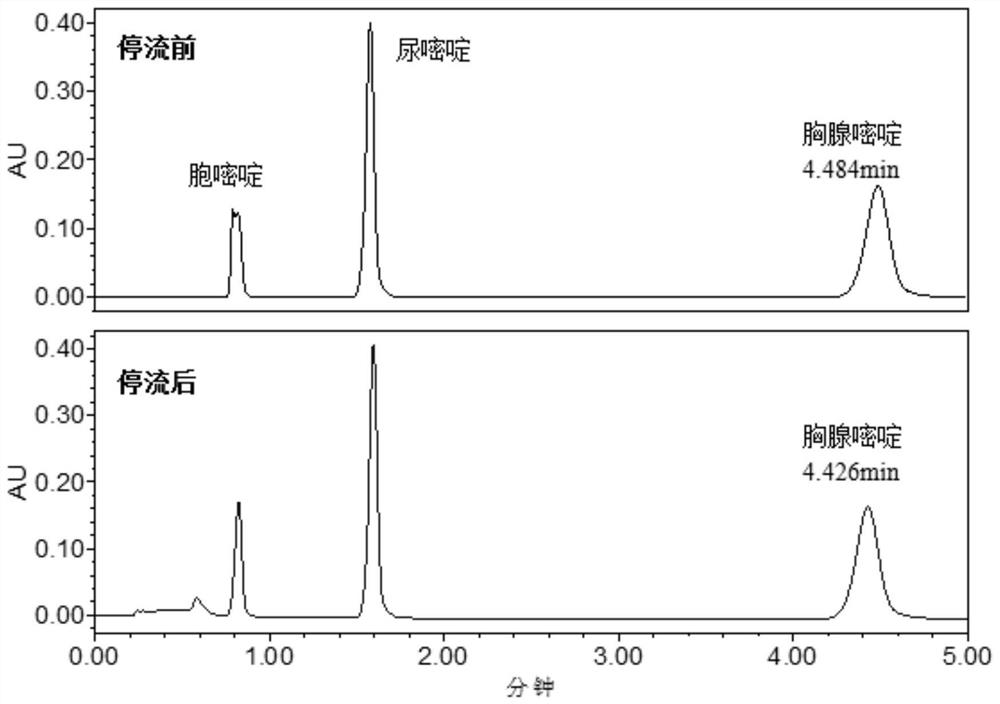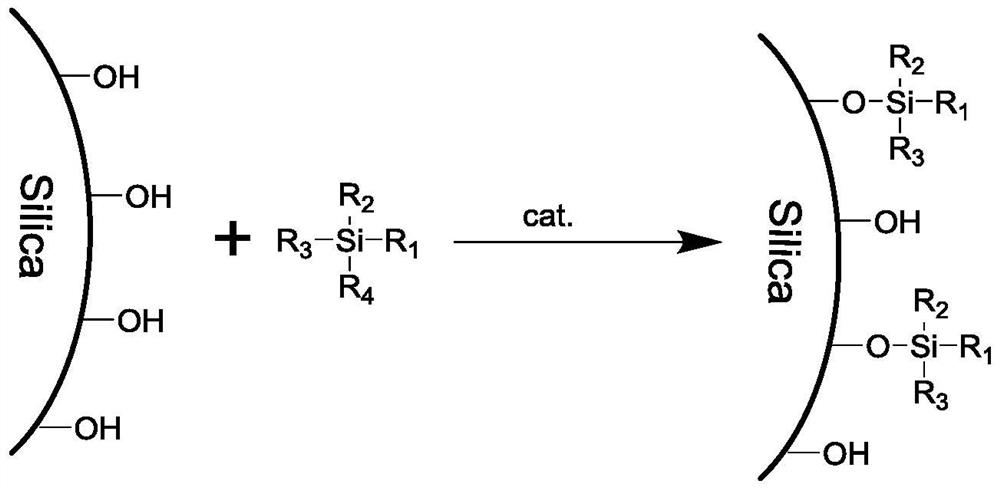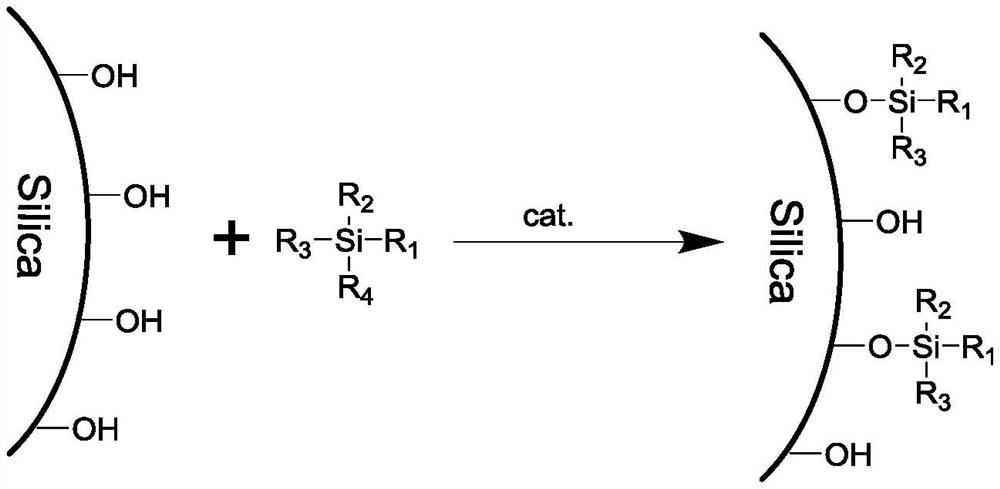Pure water-resistant chromatographic stationary phase as well as preparation method and application thereof
A chromatographic stationary phase and a stationary phase technology, applied in the field of pure water-resistant reversed-phase chromatography stationary phase and its preparation, can solve problems such as hydrophobic collapse, and achieve the effects of improved state, simple and feasible steps, and mild reaction conditions
- Summary
- Abstract
- Description
- Claims
- Application Information
AI Technical Summary
Problems solved by technology
Method used
Image
Examples
Embodiment 1
[0020] In the three-necked reaction flask, add toluene 100mL, silica gel 20g (average particle size is 2.5μm, average pore diameter is 10nm, specific surface area is 300m 2 / g), pyridine 4g, stirring to fully disperse and infiltrate the silica gel, add 6g of octadecyldimethylchlorosilane, react at 110°C, react for 12hr, and cool down; Wash with 50% methanol / water (v / v) and methanol; take out the solid and dry it in vacuum at 80°C for 12 hours to obtain 24g of the product. The carbon mass content of the product element analysis is 11%, and the calculated stationary phase bonding density is 1.77μmol / m 2 . The product is filled with a 4.6*50mm (diameter and height) column for detection. The detection method is: use 10mM ammonium formate aqueous solution as the mobile phase (without organic solvent), flow rate 1mL / min, and the sample is a mixture of cytosine, uracil and thymine , record the retention time t of thymine after injection 1 ; After the analysis, set the flow rate to...
Embodiment 2
[0022] According to Example 1, the difference is that the silica gel particle size used is 5 μm, the pore diameter is 10 nm, and the specific surface area is 300 m 2 / g; the silane is octyldimethylchlorosilane, and the silane dosage is 5g. Finally, 23g of the product is obtained, the carbon content of the product is 5.5%, and the calculated bonding density is 1.86 μmol / m 2 , and the percent change in thymine retention time was 1.5%.
Embodiment 3
[0024] According to Example 1, the difference is that the silica gel particle size used is 10 μm, the pore diameter is 10 nm, and the specific surface area is 300 m 2 / g; the silane is hexadecyltrimethoxysilane, the silane feed rate is 18g, the product is 24g, the product carbon content is 11%, and the calculated bonding density is 2.0μmol / m 2 , and the percent change in thymine retention time was 0.82%.
PUM
| Property | Measurement | Unit |
|---|---|---|
| particle size | aaaaa | aaaaa |
| pore size | aaaaa | aaaaa |
| specific surface area | aaaaa | aaaaa |
Abstract
Description
Claims
Application Information
 Login to View More
Login to View More - R&D
- Intellectual Property
- Life Sciences
- Materials
- Tech Scout
- Unparalleled Data Quality
- Higher Quality Content
- 60% Fewer Hallucinations
Browse by: Latest US Patents, China's latest patents, Technical Efficacy Thesaurus, Application Domain, Technology Topic, Popular Technical Reports.
© 2025 PatSnap. All rights reserved.Legal|Privacy policy|Modern Slavery Act Transparency Statement|Sitemap|About US| Contact US: help@patsnap.com



